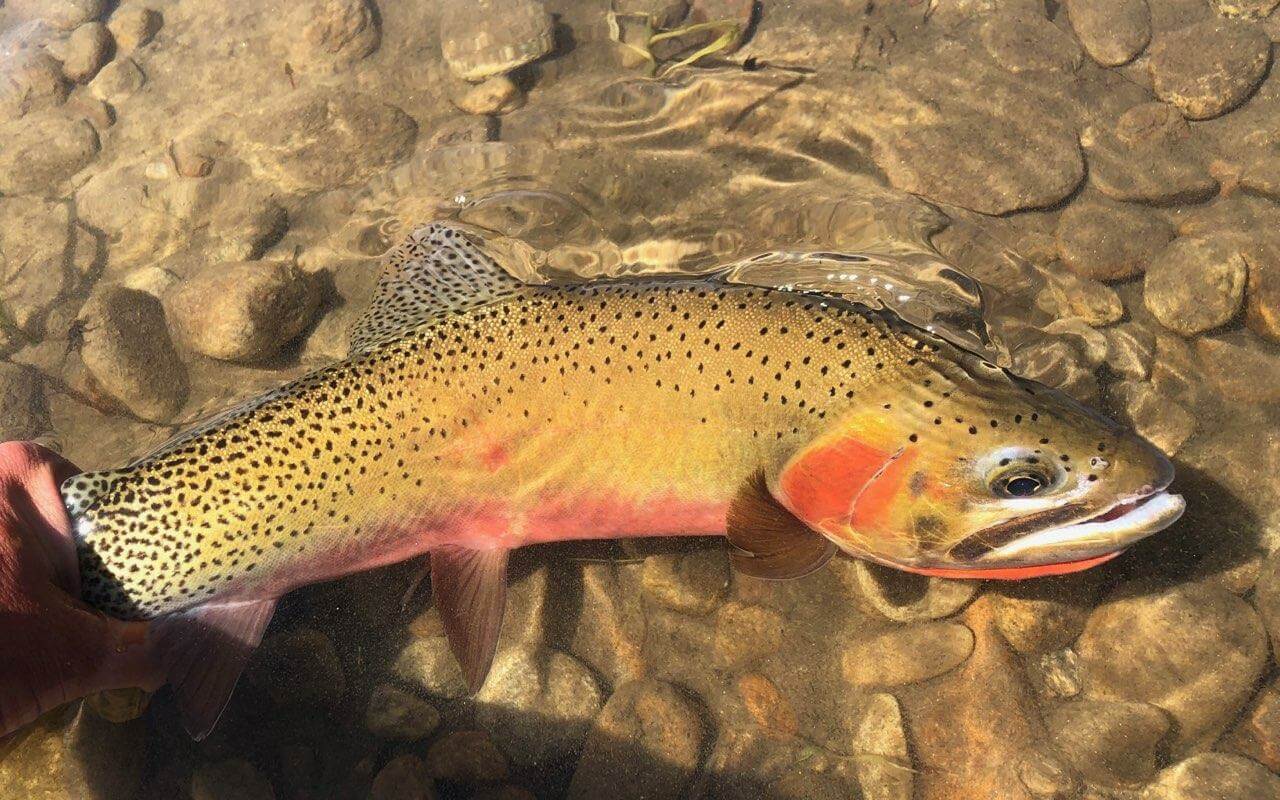Cutthroat trout are renowned for their striking appearance and their ability to thrive in challenging environments. They are a popular target for anglers and are often admired for their beauty and resilience. Let’s delve into the fascinating world of these fish.
Basic Info
- Common Name: Cutthroat trout
- Scientific Name: Oncorhynchus clarki
- Group Name: Salmonidae
- Average Life Span In The Wild: 5-7 years
- Size: Can reach lengths of up to 30 inches (76 cm)
- Weight: Can weigh up to 25 pounds (11 kg)
Behavior
- Cutthroat trout are known for their aggressive feeding habits and territorial behavior. They are primarily carnivorous, feeding on insects, smaller fish, and crustaceans. These trout are also known for their remarkable adaptability, thriving in a wide range of environments from high mountain streams to large lakes.
- Cutthroat trout often exhibit migratory behavior, particularly in river systems where they may travel significant distances to spawn. Spawning typically occurs in the spring when they seek out gravel-bottomed streams to lay their eggs. The cutthroat trout’s migratory patterns and spawning behavior are crucial for the species’ survival, especially in environments where conditions can change drastically.
How to Identify
- Cutthroat trout are easily recognizable by the distinctive red or orange slash marks located on the underside of their lower jaw. These marks give the fish its common name, “cutthroat.” Their body coloration varies depending on their habitat, ranging from olive-green to silver, with a lighter belly. They are often adorned with small black spots that are more concentrated towards the tail.
- The cutthroat trout’s dorsal fin is usually covered in small black spots, which can also extend onto the tail and upper body. Unlike other trout species, the cutthroat has fewer, more scattered spots on its sides. Their fins are typically clear to slightly yellowish, further distinguishing them from other trout species.
- In terms of size, cutthroat trout are generally slimmer and more streamlined compared to their rainbow trout relatives. The coloration of cutthroat trout can also change slightly during spawning, becoming more vibrant, with males often developing a more pronounced hump on their back.
Some pictures of Cutthroat Trout











Robert Smith is the proud owner of Bait Barrels and Bows, a premier fishing sports store established in 1989. With over three decades of experience in the industry, Robert has honed his skills to become an expert angler, sharing his vast knowledge and passion for fishing with enthusiasts around the world. Through his store and writings, Robert provides invaluable tips and guidance, helping both novice and seasoned anglers improve their techniques and enjoy the sport to its fullest. His commitment to the fishing community is evident in his dedication to quality products and excellent customer service.

